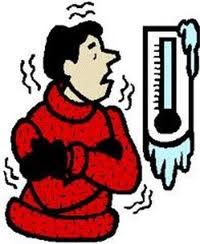The human body temperature is usually maintained at a constant level of 97.7–99.5 °F. If a person is exposed to cold, and their internal mechanisms cannot replenish the heat that is being lost, the body’s core temperature falls you are suffering from hypothermia. In the article, we are considering this is due to exposure to cold temperatures.
Hypothermia can range from mild to severe. Mild hypothermia can be treated with warm drinks, warm clothing and getting warm. Moderate hypothermia is harder to treat. Recommended treatments include heating blankets and warmed intravenous fluids. In severe hypothermia, medical intervention is normally required to save the person’s life.
Hypothermia causes approximately 1500 deaths a year in the United States. Body heat is primarily generated in your muscle tissue, while it is lost through the skin (90%) and lungs (10%). Heat production may be increased 2 to 4 fold through shivering and muscle contractions.
A few years ago a friend of mine and some companions were caught in a severe blizzard in the High Sierra’s. They were forced to spend the night in a lean-to on a ledge. Now they were well dressed and had good equipment, but they were still in danger of hypothermia.
Because they could not get up and move around, they used isometric exercises to help raise their body temperature. An isometric exercise is a form of exercise involving the static contraction of a muscle without any visible movement in the angle of the joint. When you create the tension in your muscles, it creates body heat. Be careful not to generate any type of a sweat. My friend who taught for the US Marine Corp Cold Weather School at Pickle Meadows, said that this helped them stay warmer throughout the night.
Appropriate clothing helps to prevent hypothermia. Synthetic and wool fabrics are superior to cotton as they provide better insulation when wet and dry. Some synthetic fabrics, such as polypropylene and polyester, are used in clothing designed to wick perspiration away from the body, such as liner socks and moisture-wicking undergarments. Clothing should be loose fitting, as tight clothing reduces the circulation of warm blood. See my previous post Hypothermia, How to Dress to Avoid It.
I want to make one correction to my previous post. In it I mentioned that you could lose up to 50% of your body heat from your head and neck. I have since found out that this is incorrect. Covering the head is effective, but no more effective than covering any other part of the body.
If you are in a situation that involves being on water. The United States Coast Guard promotes using life vests to protect against hypothermia through the 50/50/50 rule. If someone is in 50 °F water for 50 minutes, you have a 50 percent better chance of survival if wearing a life jacket.
Stay well dressed and warm.
Howard


Merry Christmas to you and yours! Thank you for the wonderful articles and pertinent information.